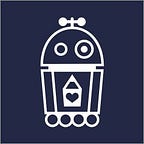What teaching my toddler and machine learning have in common
Machine learning basics: Training an ML system is kind of like teaching my child that frogs don’t say rawr.
I’ve been nailing the parenting thing lately, recently teaching my nearly two year old what dinosaurs say.
“Rawr!” obviously.
It’s totally adorable, especially when he does it on command.
But he hasn’t quite figured out what is and isn’t a dinosaur. When he comes across the big, green frog in his picture book, for example, he also says “Rawr.”
He needs a bit more time and data to accurately identify a dinosaur. A couple more weeks and a few more dinosaur books, I’m 99% sure he’ll get it.
Cute story, but what does this have to do with machine learning? Well, at a very basic level, this is exactly what happens in machine learning.
It’s not magic, it’s a model and a training set
Machine learning is an application of artificial intelligence based on the idea that we should be able to give machines access to data and let them learn for themselves.
Rather than a developer writing thousands of lines of codes, the machine learns from examples — it’s never programmed to accomplish a specific task.
To use robot speak 🤖: It’s a statistical model that is estimating a functional response to input trained from example past outputs, as opposed to explicitly programming rules or equations.
This also means the output is not completely deterministic, and is based on a probability or confidence.
Why is machine learning such a big deal?
As humans, we know more than we’re able to explain. It’s likely impossible to write down simple instructions that would allow someone to:
- Drive a car
- Recognize your friend’s face
- Play a video game
- Walk
Machine learning is overcoming this. We can train the algorithm with a ton of data — thousands of examples — so it can discover patterns, make predictions and learn.
It’s quite similar to how we teach a child. We don’t provide instructions on how to recognize a dinosaur, rather we point out pictures of dinosaurs and correct the child when they mistakenly call a frog a dinosaur.
We also highlight the feature differences that help us distinguish and classify an image. While both may be green, dinosaurs are usually large and have sharp teeth. Frogs are squat, have big eyes, and legs made for swimming.
From a machine learning perspective, what we’re describing is called supervised learning, and it’s where we’ve had the most success in the field. It primarily involves mapping from a set of inputs to a set of outputs — an input of pictures of dinosaurs and frogs, and an output of correct labels (being able to correctly identify which is which).
Of course, as humans, we’re excellent at applying knowledge that we learn in one area of our lives and applying it in new ways. As my child grows, I won’t always have to label things for him. It’s often safe to assume that someone who performs one task well, would likely be competent in a related tasks.
Machines, on the other hand, aren’t actually that intelligent yet. The intelligence is narrow.
While machine learning systems can achieve almost superhuman performance in areas that they’ve been trained:
- Beating top lawyers in evaluating contracts
- Beating leading Texas Hold ’Em pros
- Beating the professional lip reader from the BBC
They still require a human and a training set to learn.
We are likely still years away from what is dubbed artificial general intelligence — the ability for a machine to abstract concepts from limited experience and transfer knowledge between domains.
If machines aren’t that intelligent yet, should I care?
Absolutely.
The machine learning field has made huge advancements in the past few years, and it will only continue to improve rapidly. What we’ve already seen implemented is likely just scratching the surface of what’s possible.
With the ability to train machine learning systems to perform tasks at a superhuman level, ML will have a transformational impact on businesses across industries. Wherever you use a lot of data to predict an outcome is a potential use case.
